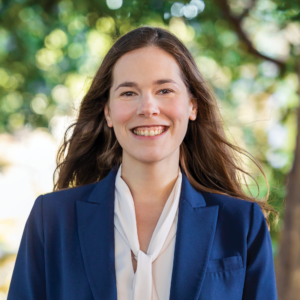Hoard's Dairyman:
New sustainability tool means better insights
October 14, 2024
 By Nicole Ayache, Chief Sustainability Officer, NMPF and FARM
By Nicole Ayache, Chief Sustainability Officer, NMPF and FARM
The National Dairy Farmers Assuring Responsible Management (FARM) Program will launch Environmental Stewardship (ES) Version 3 in the next few weeks, helping producers understand on-farm greenhouse gas emissions and reduction opportunities like never before.
FARM ES Version 3 uses a new scientific model, the Ruminant Farm Systems model. RuFaS offers the option to run scenarios to inform on-farm decisions on topics ranging from ration formulation to manure management strategies, cropping practices, and more. This update is timely, coming at a moment when U.S. dairy farmers are being asked to build on their legacy of natural resource stewardship and ramp up their greenhouse gas (GHG) reduction activities.

An example of the Version 3 program
The demand for GHG reductions is real and growing. Sixteen of the U.S.’s top 20 dairy processors have set a climate reduction target with the Science Based Targets initiative the leading global framework for companies to set voluntary GHG reduction goals, or have committed to setting one in the near future. Ten processors have targets that include Scope 3 emissions, which means they are looking for farm-level reductions. The voluntary carbon marketplace also shows this increasing demand: According to an analysis by McKinsey and Company, demand for voluntary carbon credits could rise by a factor of 15 by 2030.
FARM ES isn’t a carbon marketplace. But the upgraded platform gives farmers the insights and tools to assess the opportunities offered by carbon markets, supply chain inset projects, cost-share or incentive programs, and more. Farmers need access to robust, scientifically sound information so they can weigh options for reducing emission in ways that make sense for their business. Opportunities to reduce emissions can also mean reduced costs and increased productivity. The scenario analysis of the upgraded FARM ES evaluation tool includes an estimate of milk productivity changes and will grow to include financial analyses as these become available through RuFaS.
Just as with FARM ES Version 2, the upgraded platform continues to emphasize accuracy across different farm sizes, geographies, and styles. The data inputs are designed to be farmer friendly, and the core data required is similar to Version 2. Farmers also have the flexibility, but are not required, to input optional data such as reproductive programs, culling information, and farm cropping practices for more tailored results on emissions and carbon sequestration estimates.

A key focus for the rest of the year will be to collect farmer, FARM evaluator, and other stakeholder feedback, with plans to further refine the tool in 2025.
Farmers can reach out to their FARM Program evaluator to gain access to a FARM ES Version 3 platform once it launches. If the farm’s cooperative or processor does not yet participate in FARM ES, or if a farm would like to conduct a self-evaluation, reach out to dairyfarm@nmpf.org for guidance.
To learn more about the development of Version 3 and current FARM Environmental Stewardship efforts, please visit our website.
This column originally appeared in Hoard’s Dairyman Intel on Oct. 14, 2024.






